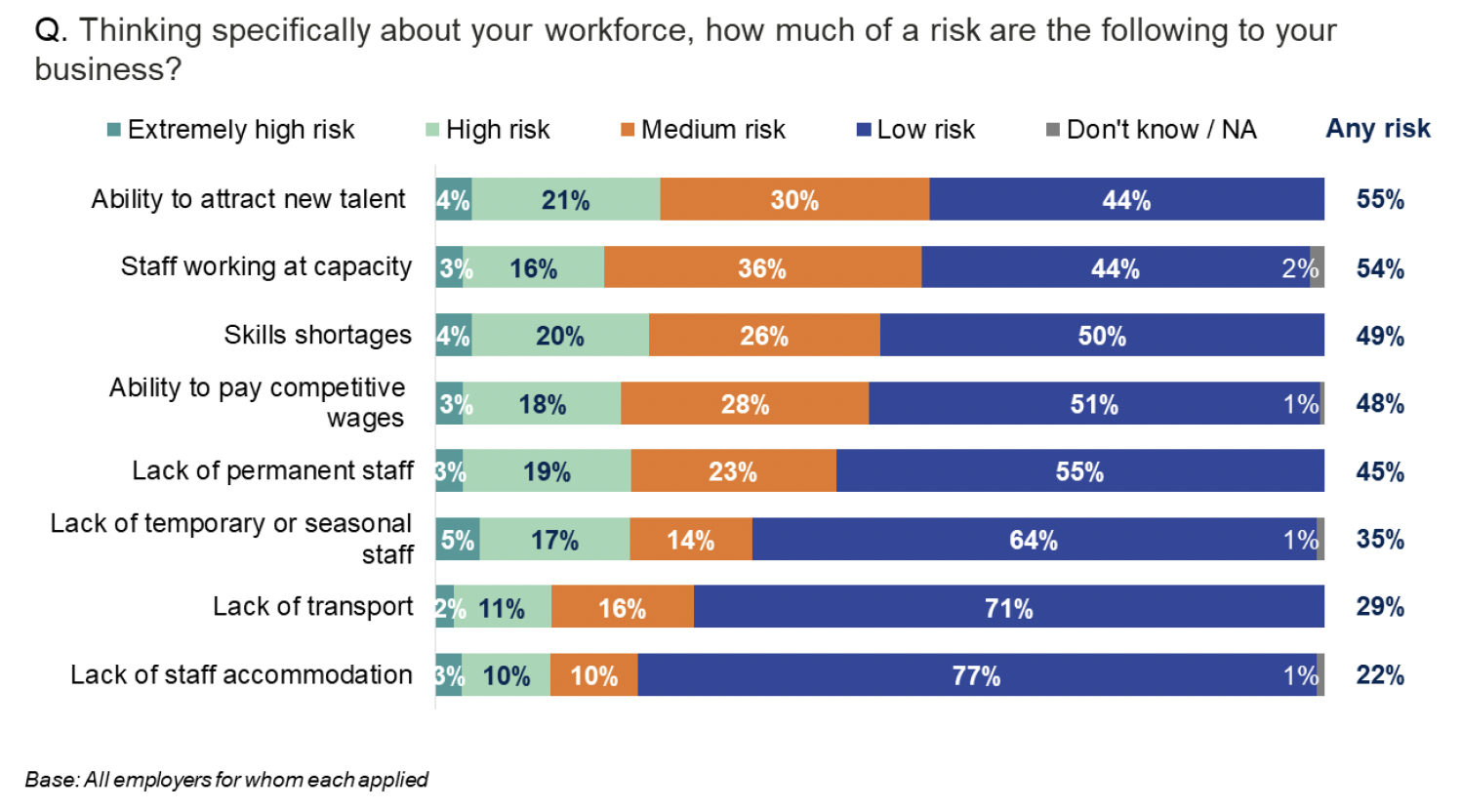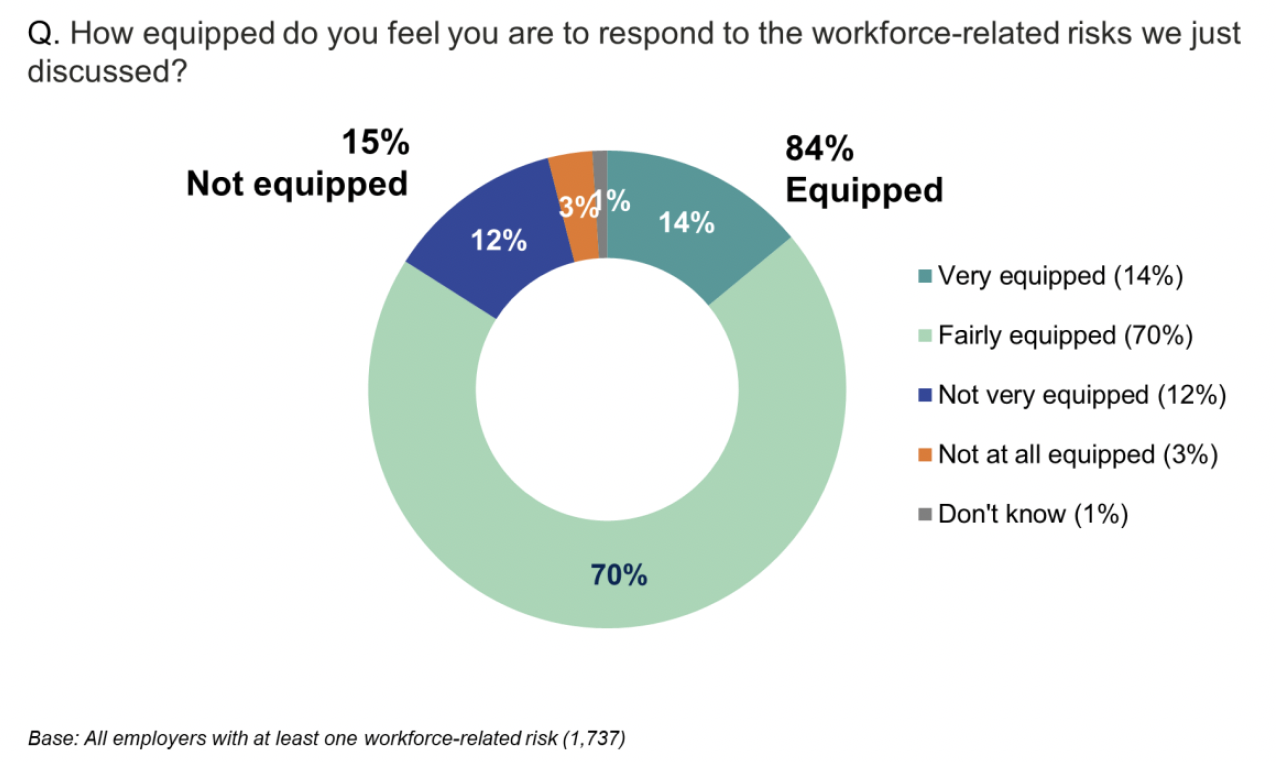Rural Scotland Business Panel Survey October 2022
This report presents findings from the third Rural Scotland Business Panel Survey carried out in June and July 2022.
6. Workforce
Key findings
Over half of employers felt their ability to attract new talent (55%) and staff working at capacity (54%) were risks to their business.
Other risks included skills shortages (49%), ability to pay competitive wages (48%) and lack of permanent staff (45%). Fewer mentioned lack of temporary or seasonal staff (35%), lack of transport (29%) and lack of staff accommodation (22%).
Most employers (84%) felt equipped to respond to workforce-related risks, while 15% did not.
Workforce-related risks
Over half of employers felt their ability to attract new talent (55%) and staff working at capacity (54%) were risks to their business. This was followed by skills shortages (49%), ability to pay competitive wages (48%) and lack of permanent staff (45%). Fewer mentioned lack of temporary or seasonal staff (36%), lack of transport (29%) and lack of staff accommodation (22%) (Figure 6.1).

Variation
In terms of sectoral variation:
- Tourism businesses were more likely than average to feel at risk from: staff working at capacity (66%), ability to attract new talent (63%), ability to pay competitive wages (62%), lack of temporary or seasonal staff (62%), lack of permanent staff (56%), lack of transport (53%) and lack of staff accommodation (38%)
- Food and drink businesses were more likely to feel at risk from: staff working at capacity (61%), ability to attract new talent (62%), skills shortages (56%), ability to pay competitive wages (53%), lack of temporary or seasonal staff (53%), lack of permanent staff (52%), lack of staff accomodation (36%) and lack of transport (36%).
Others that were more likely than average to say most of these workforce issues was at least a medium risk included:
- Businesses in remote rural areas
- Large businesses with 11-24 or 25+ staff members
- Those impacted by EU Exit, COVID-19, the Russia-Ukraine conflict and rising costs
- Businesses behind where they would like to be on productivity, competitiveness, and skills performance.
Ability to respond to risks
Most businesses (84%) felt equipped to respond to workforce-related risks, while 15% did not (Figure 6.2).

Variation
The following businesses were more likely to not feel equipped to respond to workforce-related risks:
- Businesses in remote rural areas (22% not equipped)
- Tourism (27%) and food and drink businesses (23%)
- Those impacted by the Russia-Ukraine conflict (18%), EU Exit (17%) and rising costs (16%)
- Businesses behind where they would like to be on skills development (26%), competitiveness (25%), adoption of technology (22%) and productivity (19%).
As with general risks to the business, most businesses (more than 7 in 10) felt they were very or fairly well equipped to respond to each one (see Appendix A).
Contact
Email: socialresearch@gov.scot
There is a problem
Thanks for your feedback